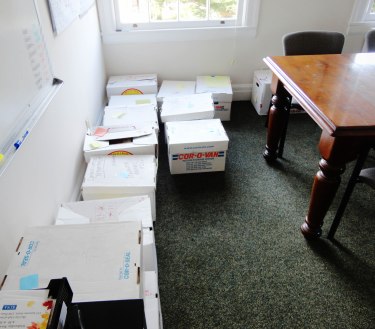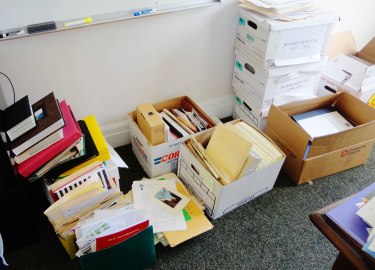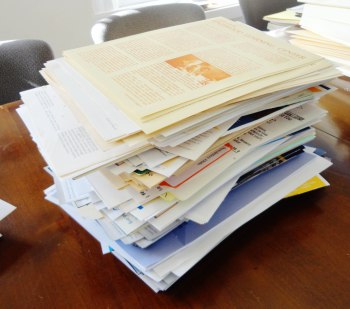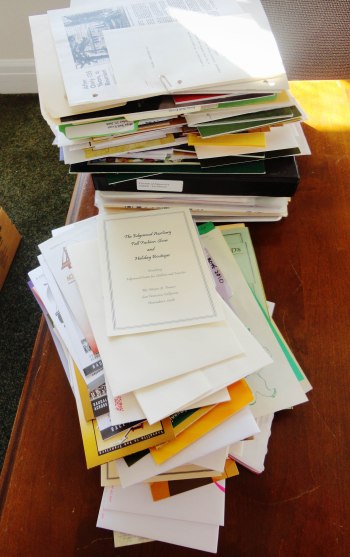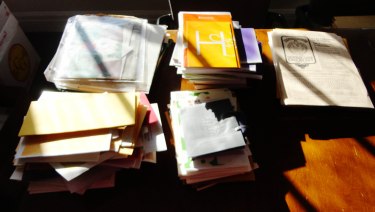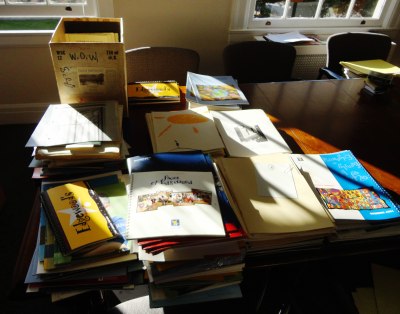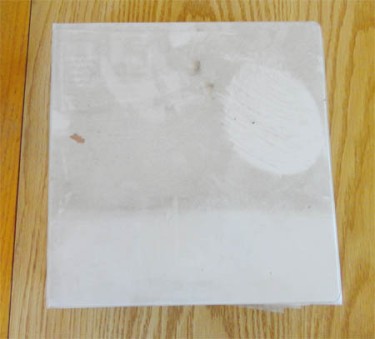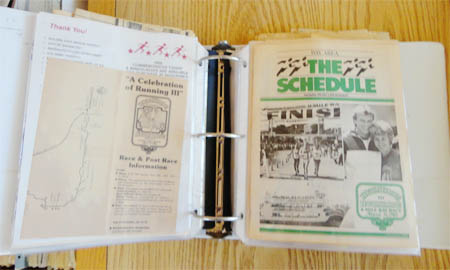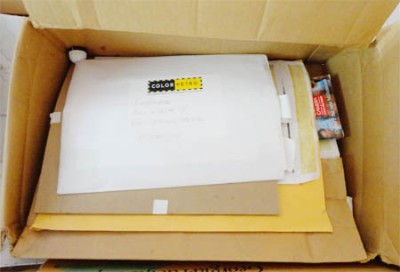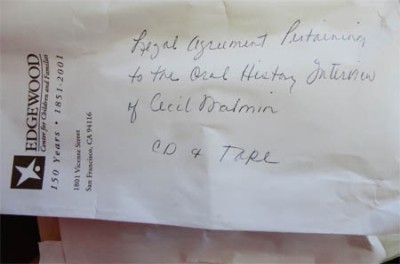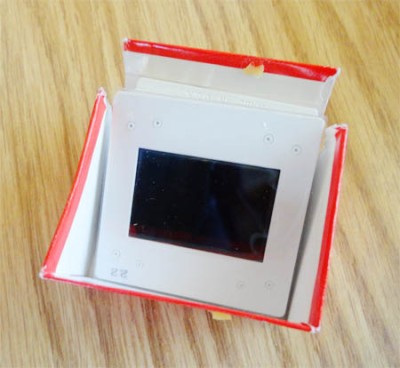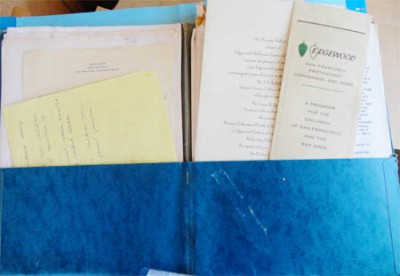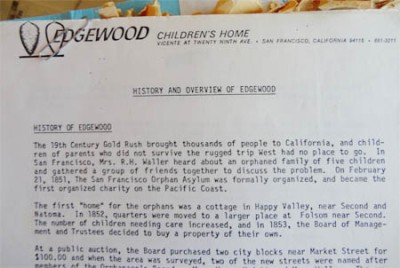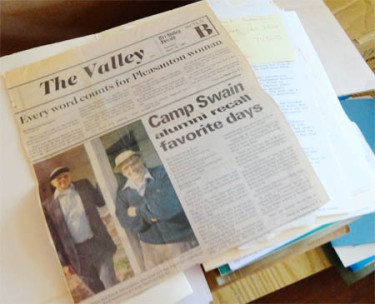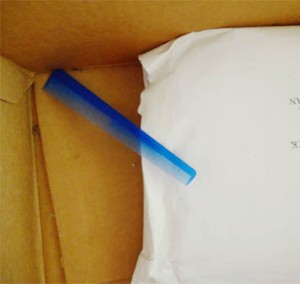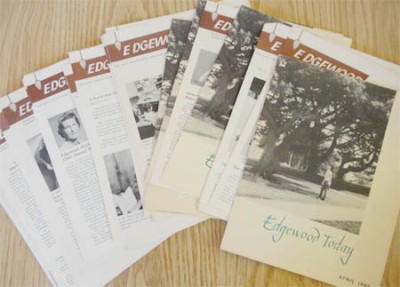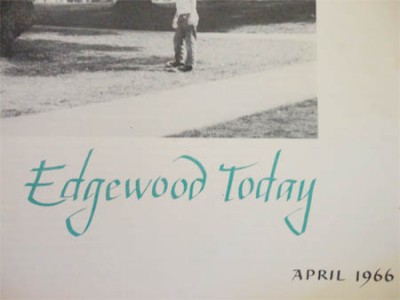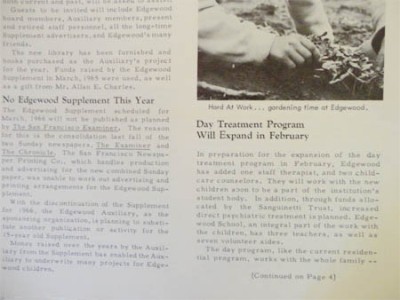The time finally arrived to sort through the surprisingly massive amount of materials I had uncovered during my survey. Once I got all of the boxes in one place, it turned out that I had way underestimated the number of boxes I needed to go through. I thought I had 14, but I really had 23! I was able to use my boss’s office and there were boxes everywhere…
And more that were hidden under desks and tables. I had been thinking the entire semester of the best ways to organize the records, so luckily, the sorting passed by relatively quickly and easily.
This is about a third of the way through
And more progress, about two-thirds done
I was able to give five boxes worth of materials to the communications director, as there were piles of recent photos, printed materials, and publicity documents. I was also able to recycle the equivalent of two boxes due to the many duplicate items. A couple of the boxes were artifacts, which I previously inventoried, and I gave one box to my boss since it was old donor files that were inadvertently given to me.
With everything sorted, I began organizing the newsletters into subseries. I came up with eight subseries, which were organized by title and one for random newsletters. I was happy to find that I have a pretty complete series of the earliest newsletters, from 1965-1972, but I have a gap until 1981. I’m not positive they were even creating newsletters during this time period, though.
I was able to turn this
Into this!
Next I began to organize the large amount of event materials. These records posed a much larger challenge in terms of organizing. There were several types of records that could either be a series itself or a subseries. After much debate and consideration of what I know about the agency and what would be most beneficial to staff and volunteers, I decided upon one main events series, with subseries for each year of a large fundraising event, a subseries with all materials for another event where it wasn’t necessary to have each year separated, and a subseries for miscellaneous events.
I also decided that any Auxiliary-related events would be a subseries under the Auxiliary series, and not under the events series, due to the history of the Auxiliary (since the 1940s) and how people search for information related to them. It would be most helpful for people to have all Auxiliary records together, rather than as subseries in other areas.
This towering pile of event invitations and programs
Became this… And this was actually subdivided a little more. I inventoried the records for the large fundraising event, but not the miscellaneous events because there are too many (probably around 100) and it’s actually unlikely that anyone will ever want to reference them. These are the types of materials that have very little research value but no one wants to get rid of. I may go back later and try to record the general time frame that these cover, though.
Next, I inventoried the annual reports, which equaled three boxes of records. I still have to count the annual reports from 1853-1931, but was able to count (and weed) the more current ones. Based upon a discussion with my boss, I am saving up to five of each. I think this is too many, but it’s a good start to removing duplicate items. This group is complete from 1982-2013. So, combined with the earliest records, I’m missing annual reports from 1931-1982 – a huge gap – yet, I’m still thankful that I have any older reports at all.
I was very pleased that things went smoothly. Even though everything is sorted into general type, I still have eight boxes left to organize and inventory. Not too bad since I started with 23! I hope to have that done in the next week or so. In the meantime, I’m already starting to refine my digitization plan based on what I’m learning that I have. Obviously, I won’t take the time to digitize anything too current, but definitely the older newsletters and annual reports.
I’m also very happy to say that I found the missing photo albums that I thought had been thrown out! You may remember me mentioning it a few weeks ago. I found them in a box under a pile of VHS tapes. I was about to give the whole box to the communications department when I saw the albums. I don’t know how they ended up in that box, but I’m so happy to have found them again.
In other news, I wrote the questions for the first oral history interview, which is in just a couple of weeks, and sent it out to colleagues and the CEO for feedback. I confirmed that I could borrow an archivist friend’s recording equipment for the interview, which is very helpful and a big weight off my mind. I also typed up the inventory list of the completed series.
I also began transcribing the oral history interview that the original Edgewood archivist did back in 2001. It took me about 45 minutes to transcribe the first 15 minutes, and I type about 100 wpm! That really opened my eyes up to the time required for transcription. I will put transcribing that interview on the back burner for now and focus on my immediate project plans. I will also need to rethink my goal of having both interviews transcribed by the end of the semester, since the second one is just a week before the semester ends. This project is really helping me to learn about the exciting work of an archivist, as well as the challenges in time allocation and deadlines!
